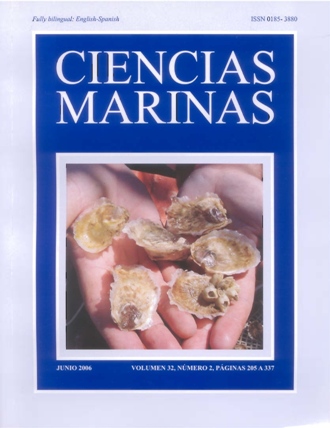Stony corals (Scleractinia) from the Marías Islands, Mexican Pacific
Main Article Content
Abstract
Recent studies performed off the Pacific coast of Mexico have shown a large number of reefs or coral patches in the region, but information is still lacking for some areas. One of these is the Marías Archipelago (21°N), composed of four islands: María Madre, María Magdalena, María Cleofas and San Juanito. The objective of this paper was to make a general evaluation of the status of the corales in the archipelago by revising the systematic list of species and analyzing the community structure and biogeographic patterns of the fauna. Twenty-one locations at María Madre Island and two at San Juanito Island were visited in August 1997, and at each we conducted a video transect (150 m long) to describe zonation and a line transect (20 m long) for quantitative analyses. This information was complemented with literature reviews and data from specimens deposited in museums in Mexico and the United States. After obtaining the systematic list of corals from the islands, we compared the level of similarity of the fauna with that from five nearby regions (including the Revillagigedo Islands and the mainland from 23ºN to 18ºN), and ordination analyses were run. In the field we observed 13 species of stony corals (including eight new records), but did not find Porites baueri, a nominally endemic species from the Marías Islands. The museum revisions produced two new records. Thus, analyzing the full data set, 20 species are considered residents of the study area. There were no constructional reefs in the archipelago, but coral abundance was high, especially at María Madre Island. The communities showed a clear zonation, with Pocillopora in shallow water and Porites, Pavona and Psammocora in deeper localities. Finally, the biogeographic analysis indicated that the mouth of the Gulf of California represents a key area for species immigration from the western Pacific, and that the Marías Islands seem to act as a nodal point for coral dispersal to the north.
Downloads
Article Details
This is an open access article distributed under a Creative Commons Attribution 4.0 License, which allows you to share and adapt the work, as long as you give appropriate credit to the original author(s) and the source, provide a link to the Creative Commons license, and indicate if changes were made. Figures, tables and other elements in the article are included in the article’s CC BY 4.0 license, unless otherwise indicated. The journal title is protected by copyrights and not subject to this license. Full license deed can be viewed here.

